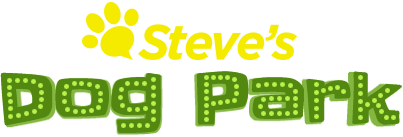
Bonding With a Skittish Dog
Bonding with a dog can be difficult sometimes, especially if you have just rescued the dog and are trying to train the pup that all you want to do is love and care for him. Dogs that have had a rough past may be extremely reluctant to trust you and reciprocate any of the attention you are giving them. In this case, it is important to consider a few things: you may not know what the dog has been through, so treat every situation with caution; they want to give affection, but they don’t know how because they don’t yet know how to trust; treats are always the answer. For more information about how to care for your skittish dog, keep reading. Join Speak Dog!™ and let Steve Lankfer guide you through some of the most important dog training techniques.
Get to Know the Dog on Their Time
This could possibly be the most important step, as it allows you to learn about the dog and get to know them at their own pace. Further, it allows you to understand the dog’s wants and needs without having to force them into anything. During this time, it is vital for you to pay attention to any signs that they are sending you. If your pup needs some space, they may lick their lips, yawn, pant, tuck their tail between their legs, and avert their gaze. If you are approaching your new pup and they begin exhibiting this behavior, it is best to respect their space and try again a little later.
As you continue creating a comfortable environment for your dog, you also want to make sure you are not intimidating your pup. Avoid big gestures and keep your tone of voice low and calm as they continue getting used to their new home. If you are taller than average, then try sitting on the ground and letting your dog come to you. Hovering or towering over your dog will frighten them and make them feel trapped, increasing their anxiety.
When you pet your dog, avoid sensitive areas like their head, ears, tail, and paws, and focus on petting areas like their back. Don’t let any unfamiliar person approach and touch your dog unless your dog is interested in getting attention from them. All of this emphasizes the fact that you are trying to gain your dog’s trust step by step, little by little.
Create a Comfortable Space
Your home is your sanctuary, and it is going to be the same for your new pup. While your rescue dog will need some time to adjust to the new space, you can do some things to nurture your dog’s trust. Place your pup in a room that isn’t too big or small where they can feel safe. Place a nice dog in bed or even a place to hide if they need it. Giving the dog their own space and time to get comfortable will allow them to gradually open up in their own way.
Try Classical Conditioning
Your dog could potentially be skittish as you approach them or move around in general. To desensitize them to this action, help them feel more comfortable and secure about your movement, especially towards them. To do that, have a high-value food in your hand, like a treat, cheese, or chicken, and walk towards your dog. Drop your object near your dog and keep walking while speaking to your pup in pleasing and soothing tones. Repeat this daily or multiple times a day until your pup starts to perk up when he sees you approaching. Once you see your dog positively respond to your movement, drop the treat and then hang out nearby.
Continue talking to your dog in soothing tones but do not interfere with the food they are eating. Taking food away from a fearful or skittish dog only reinforces their reasons not to trust you, making it harder for you to connect with your pup.
Take Your Pup On a Walk
Depending on how skittish your dog is, you may have trouble getting them on a leash. This may take some conditioning, but that isn’t impossible either. Try putting the leash on your pup before giving them a treat and doing something like sitting on the couch to watch TV. This will let your dog know that there is nothing bad associated with the leash.
Once you have your dog on the leash and are outside, avoid walking your pup in noisy or “scary” places. Start by walking your dog in residential neighborhoods before gradually shifting your walks to busier locations. Don’t leave the house without grabbing treats that you can give your dog when anything loud or unexpected happens. You want your pup to get comfortable with being outside and being exposed to life outside of your home in a positive way.
Socialize Your Dog
A dog with trust issues may not always trust you, but are usually comfortable around other dogs. Give your dog the opportunity to socialize with other dogs to help relieve any stress and help build up their confidence. If you are planning on socializing your dog, avoid closed dog parks, as they are often noisy and chaotic, not to mention extremely overwhelming for fearful dogs. The best route to take is to have your pup interact with one dog at a time, preferably one that is very comfortable and trusting with humans and has good habits. The role model may help in making your pup feel like there is nothing to be scared of.
Reward Your Dog — They’re Doing Their Best
No matter how illogical your dog’s behavior may seem to you, remember that they are handling the situation the only way they know how. No matter what you do, keep your voice calm, low, and soothing. Your dog is doing their best and further punishing or harming the dog will not do you any good in helping them be more comfortable around you. Keep your pups favorite treats near you at all times so you can reward good behavior, but also remind them that you are someone to trust. Be patient, kind, and loving, because your dog will learn to trust and love you right back.
Dogs are quick learners, despite what you may think. They will take clues from your body language and tone of voice and react accordingly, so it is important that you respond to them with kindness and patience. Slowly but surely, your dog will overcome their shyness and learn to trust you. If you want to learn more about how to train your dog, join the Speak Dog!™ community and let Steve Lankfer guide you through essential and effective dog training techniques.

Join our canine community today!
Steve's Dog Place is the FREE place to talk about dogs, learn about their behavior, brag on your pet and more.
Make a pet profile
Share pics
Meet other dog lovers
Post canine questions
Earn Attaboy! Reward Points and more
